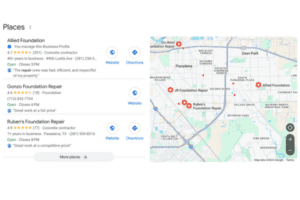Though the old adage says that customers are always right, if you’ve spent any amount of time serving customers, you know the truth: they sometimes aren’t. In fact, sometimes customers can become unreasonable and angry and cause difficult situations for you and your customer service agents.
Angry customers aren’t an ideal situation for anyone involved. For your business to be successful, you want happy customers. And you don’t want your employees to be subjected to verbal harassment and abuse. But, sometimes despite your best efforts in making sure your company offers top-notch customer service and products, you’ll still get angry customers. Even the companies with the best customer service gets their share of unreasonable, belligerent customers.
The majority of your customers won’t cause an issue, including most customer complaints. Many customers are able to contact your company to report an issue or complaint and handle the situation reasonably. But there will still be situations where a customer may seem ready to explode – and it’s important for your business, your employees, and your customers to make sure your customer service team knows how to defuse those volatile situations.
Here are some ways that you can help prepare your customer service team to defuse difficult customer interactions:
1. Stay calm
This is probably the most important and most difficult method to manage. It’s natural to want to respond to being yelled at and berated in a similar manner. It can be tempting to respond defensively when you’re feeling attacked. But when you’re dealing with an irate person, responding in kind is often the worst thing you can do and will only serve to escalate the problem.
When a customer is yelling or otherwise being rude, it’s important to keep your voice calm. Some great ways to remain calm during a heated moment is to focus on your breathing and your involuntary physical responses. Take a moment to make sure you’re taking deep, slow breaths. Consciously relax any clenched muscles. It may not feel natural to force your body to relax in a situation where you’re being yelled at, but it will go a long way towards helping the situation resolve as peacefully as possible. Relaxing your muscles and breathing deeply will help you make sure you won’t respond in anger and will help keep you from escalating the situation.
2. Practice empathy
Customers become angry for a number of reasons. Sometimes those reasons are valid – and sometimes they’re not. And sometimes, there’s a mix of valid and invalid reasons. Customers are people and they can often bring whatever it is they’re going through in their life into the argument.
There is plenty of scientific evidence suggesting that people who seem to overreact to relatively small things aren’t responding to the immediate situation – they’re reacting to buried or accumulated frustrations in other areas of their lives that they haven’t dealt with yet. For customers, this often means that while the situation they’re complaining about is a problem, there is probably more going on than just late shipping or a glitch in your product.
When you remind yourself that this person is likely reacting to situations beyond your control and might be dealing with a number of other stresses outside of the immediate situation, it can help you experience empathy and remain calm. It can also help you distance yourself from the rudeness when you know that it’s not actually you that they’re angry with, but a culmination of issues.
3. Practice active listening
Many customers get angry when they don’t feel heard or understood. If they are upset about something and feel ignored, they can often get frustrated and continue to escalate the situation. Unfortunately, this is often a counterproductive strategy, as the angrier they become, the harder it can be to understand them. The best way to avoid this is to practice active listening.
Active listening is a vital part of any communication, but especially important in defusing tense customer situations. When we actively listen, we are listening to understand what the other person is saying instead of focusing on what our response will be. When a customer is angry, try focusing on what they’re saying and then repeat it back to them to make sure you’ve understood correctly. Use phrases like, “What I’m hearing you say is…” or “Is this what you’re saying to me?”
If they say no or indicate that you’ve misunderstood them, ask them to clarify what they mean. Tell them you want to understand the situation and would like to help them, and then ask them to clarify what they want. This will help them feel heard and understood and will hopefully help defuse the situation.
4. Apologize
Apologizing is another way to help the customer feel heard. Whether or not the customers complaint is legitimate, a simple and sincere apology can go a long way in deescalating a tense situation. It can help the customer feel heard and understood when you apologize and acknowledge their frustration. Make sure the apology is sincere and it will go a long way towards helping them calm down enough to find a solution with you.
5. Communicate specific steps towards a solution
Once you’ve learned what the triggering issue was for the customer’s anger (long wait times, damaged product, etc.), offer a solution. If you’re not sure what the next steps are or how to specifically handle the situation, be honest and tell the customer what you can do. Setting clear, concrete steps for how you’ll handle the situation will show the customer that you’re capable and will help them know they are being taken care of. You can even tell a customer that you’ll need to check with a supervisor or check on the status of their order and let them know you’ll get back to them as soon as you do know the answer.
You can also ask them if their is anything you can do that will help resolve their issue. Sometimes they may just want a simple solution and for their anger and frustration to be acknowledged. The important thing is to tell the customer what you’re doing specifically to solve their problem – even if that involves doing a little research and getting back to the customer later.
6. Take deep breaths and step away
Once you’ve deescalated the situation, it’s a good idea to take a small break and collect your breath. Dealing with irate customers is hard and even when you handle the customer calmly, the intensity of the situation can still cause stress for you. It’s important to take a moment to yourself and take some deep breaths before moving on to the next customer or task.
No one wants to deal with irate and angry customers. It can be a difficult situation to navigate. You do everything you can to make sure that you avoid upset customers. You provide great service and go to every reasonable length to ensure nothing goes wrong. Of course, that’s not how life works and there will always be some level of error or mistakes. And sometimes customers will get angry even when nothing went wrong. Knowing that these situations will happen will help you prepare your team.
Following these steps will help make sure that when a volatile customer interaction does happen, your team will be prepare to defuse the situation and achieve the best possible outcome.















